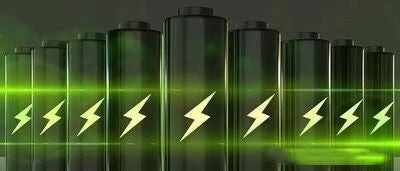Partially compatible with liquid lithium batteries, stacked sheet-based, film-forming is the key link. Solid-state batteries use composite positive electrodes, electrolyte addition method is different from liquid batteries, mainly stacked sheet. Solid-state batteries and liquid batteries have many similarities in the manufacturing process, such as the manufacturing process of electrode tabs are based on slurry mixing, coating and extension, slitting is completed after the lug welding, PACK (battery pack processing into groups), the most core difference has three points:
(1) Solid-state battery cathode material composite, that is, a mixture of solid-state electrolyte and cathode active material as a composite cathode;
(2) The electrolyte is added in a different way, liquid batteries are injected with electrolyte into the battery and encapsulated after the pole lugs are welded, while the solid-state electrolyte needs to be coated again on the composite anode completed by extension, in addition to forming a composite anode with the anode active substance;
(3) Liquid lithium-ion battery pole pieces can be combined in the form of winding or stacking, while solid-state batteries are usually encapsulated in the form of stacking due to the poor toughness of their solid electrolytes such as oxides and sulfides.


The core process of solid state electrolyte is film formation, which can be divided into dry, wet and other processes. Solid-state battery manufacturing, the core process lies in the solid-state electrolyte film-forming link, the electrolyte film-forming process will affect the thickness of the electrolyte and related performance, the thickness of the thin, will lead to its mechanical properties are relatively poor, easy to cause breakage and internal short-circuiting, thicker internal resistance increases, and due to the electrolyte itself does not contain the active substance, reducing the energy density of the battery monomer and the system.
①,Wet film forming process
Mould support film, applicable to polymer and composite electrolyte, solid electrolyte solution is poured into the mold, and solid electrolyte film is obtained after solvent evaporation; anode support film, applicable to inorganic and composite electrolyte film, solid electrolyte solution is poured directly on the surface of the anode, and solid electrolyte film is formed on the surface of the anode after solvent evaporation; skeleton support film, applicable to composite electrolyte film, electrolyte solution is injected into the skeleton, and solvent evaporation is carried out; skeleton support film, applicable to composite electrolyte film, electrolyte solution is injected into the skeleton, and solvent evaporation is carried out. Skeleton support film, applicable to composite electrolyte film, the electrolyte solution is injected into the skeleton, and after the solvent evaporates, a solid electrolyte film with skeleton support is formed, which can improve the mechanical strength of the electrolyte film. The core of the wet process is the selection of the binder and solvent, which is easy to evaporate and has good solubility and chemical stability to the electrolyte. The disadvantage of the wet process is that the solvent may be toxic, the overall cost is relatively high, if the solvent evaporation is incomplete, may reduce the ionic conductivity of the electrolyte.
②, dry film-forming process
The electrolyte is mixed with the binder and then ground and dispersed, and the dispersed mixture is prepared under pressure (heating) to obtain a solid electrolyte film, the method does not use solvents, no solvent residue, the disadvantage of the dry method is that the electrolyte film is relatively thick, due to the absence of active substances within it, which will reduce the energy density of the solid-state battery.
③, other film-forming process
Including chemical, physical, electrochemical vapor deposition, and vacuum sputtering and other methods. Such processes are more costly and suitable for thin-film all-solid-state batteries.

Polymers are compatible with a wider range of processes, sulfides are more environmentally demanding, and oxides are suitable for deposition and casting. Solid electrolyte film formation methods are more, polymers, sulfides and oxides can combine their own characteristics to match the most suitable film formation process.
(1) polymer solid electrolyte has the strongest process compatibility because of its optimal processing performance, in addition to the inability to granulation is not applicable to deposition method, the use of dry extension, dry spraying, extrusion, casting and infiltration processes can be realized polymer solid electrolyte film.
(2) sulfide due to poor air stability, not suitable for high temperature conditions of the extrusion method and small size of the deposition method, in addition to the extension, spraying and other processes can be used for sulfide solid electrolyte film.
(3) Oxide due to ceramic properties, high brittleness, need to be combined with particle deposition + sintering way into the film, or in the solution co-mingled under the conditions of casting molding.


